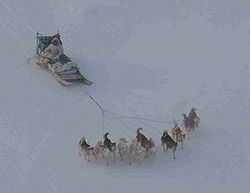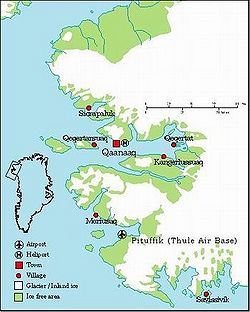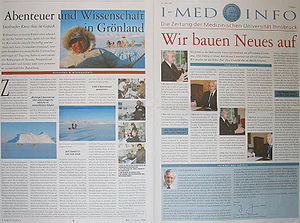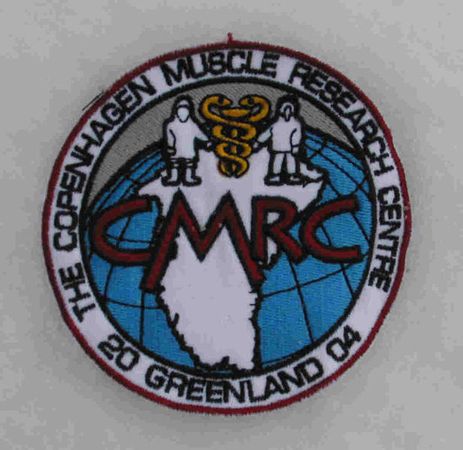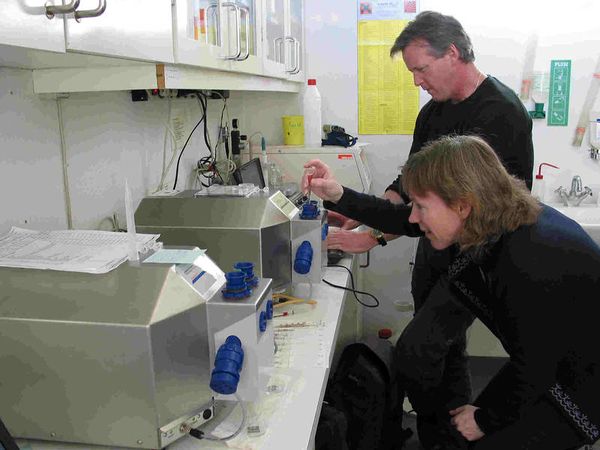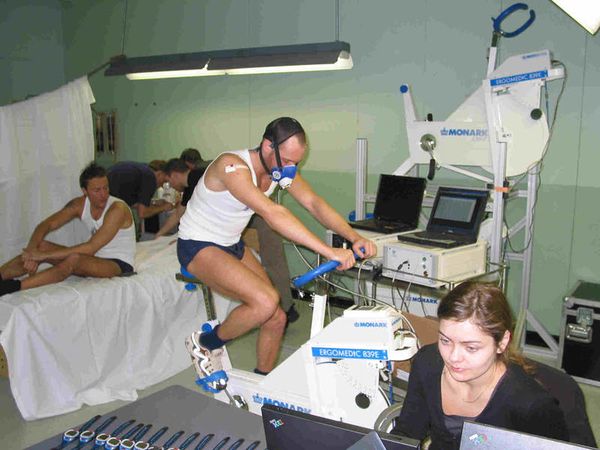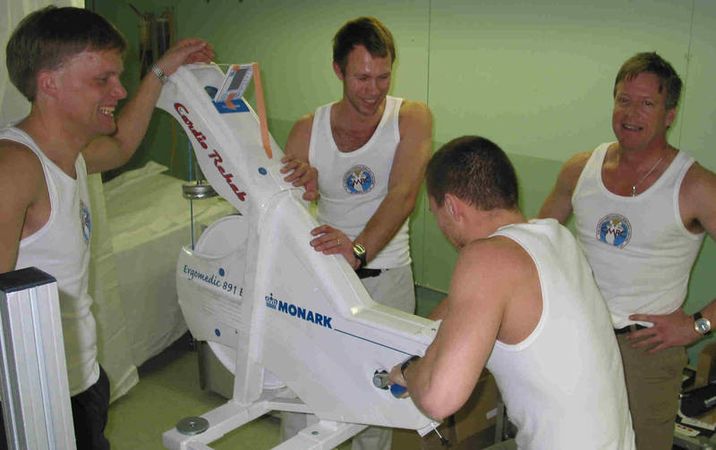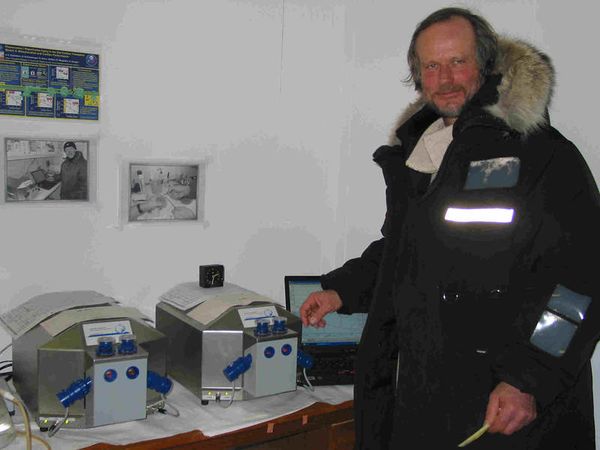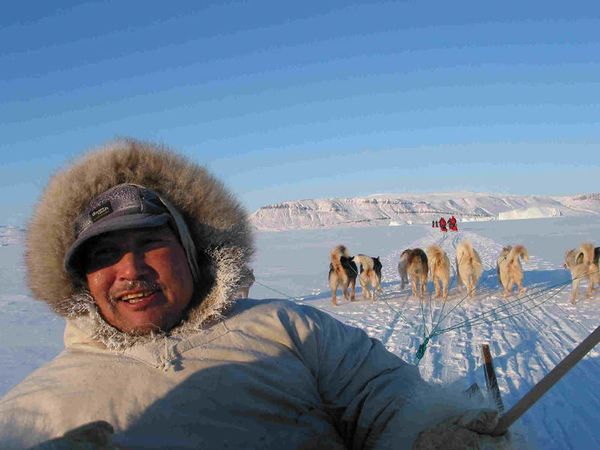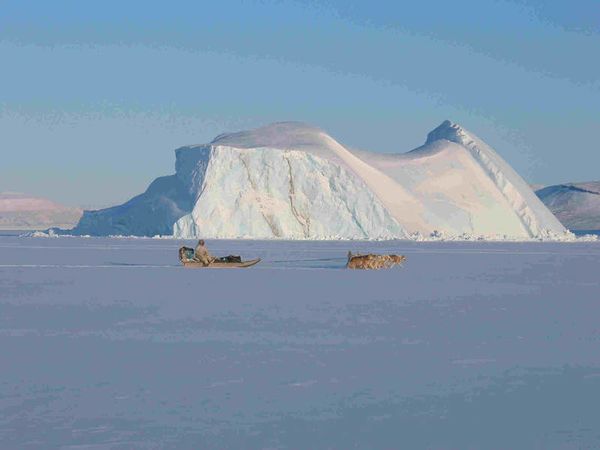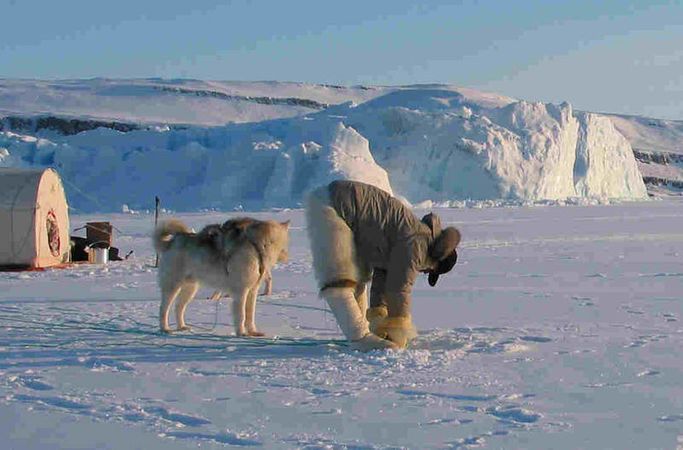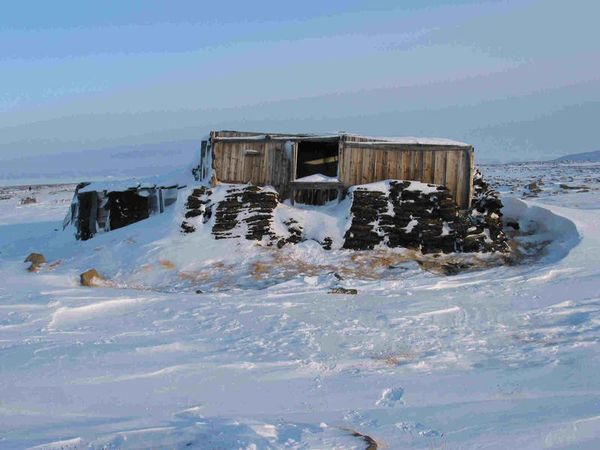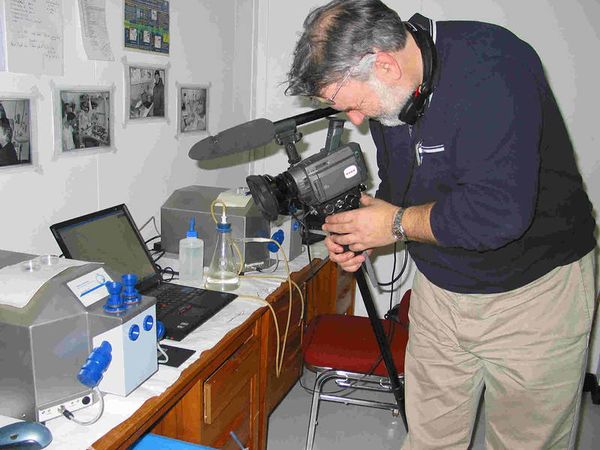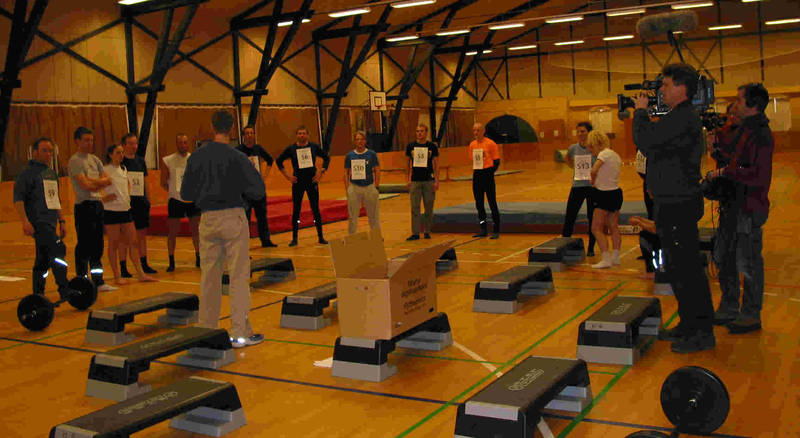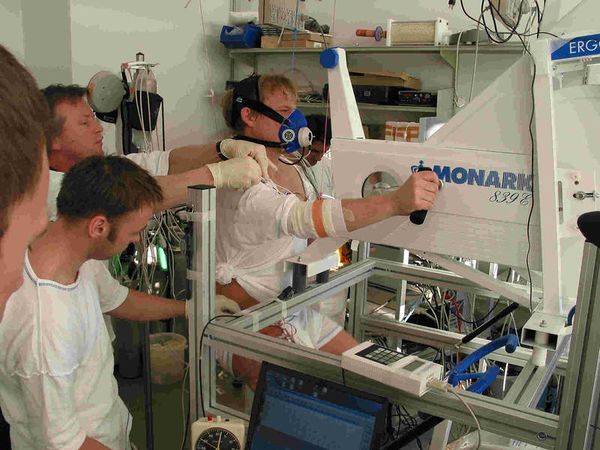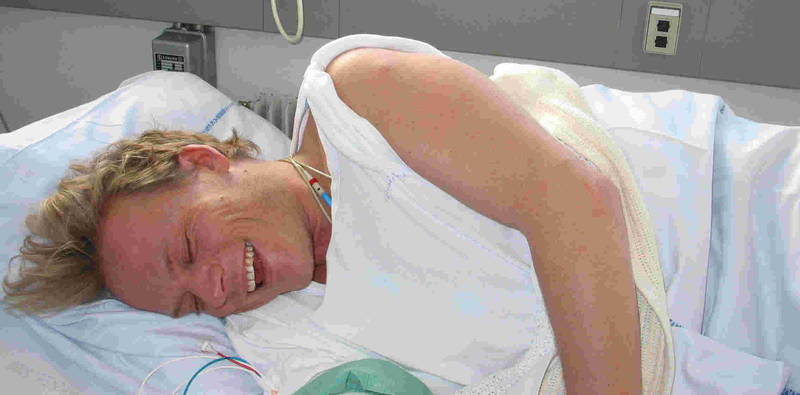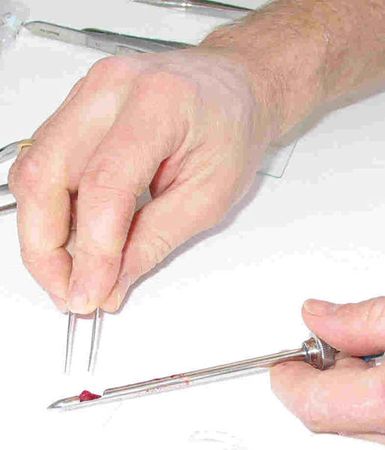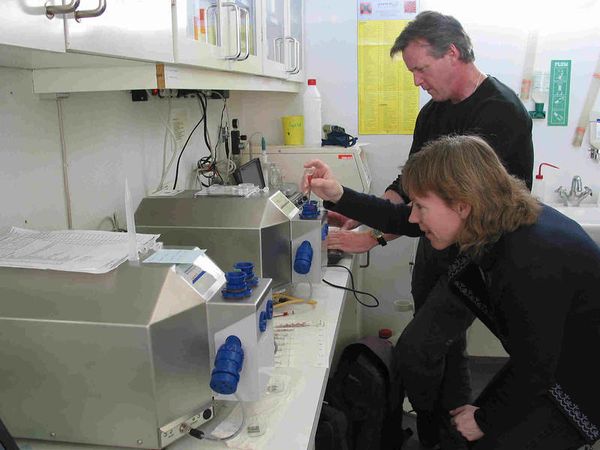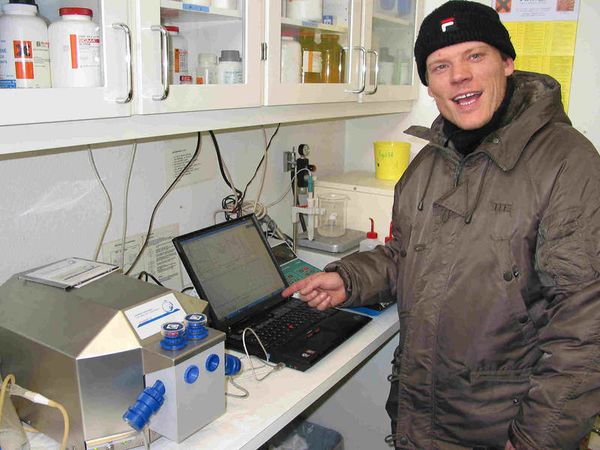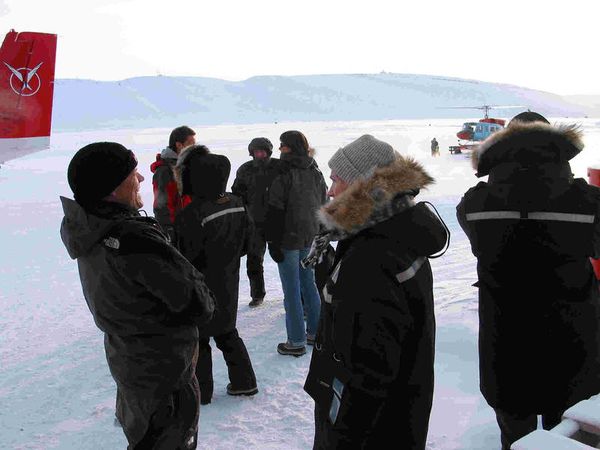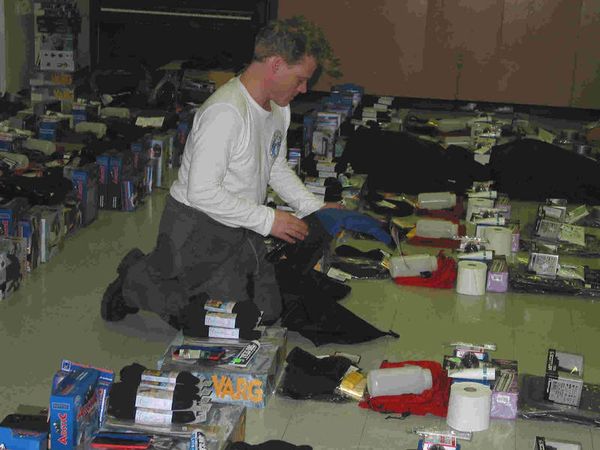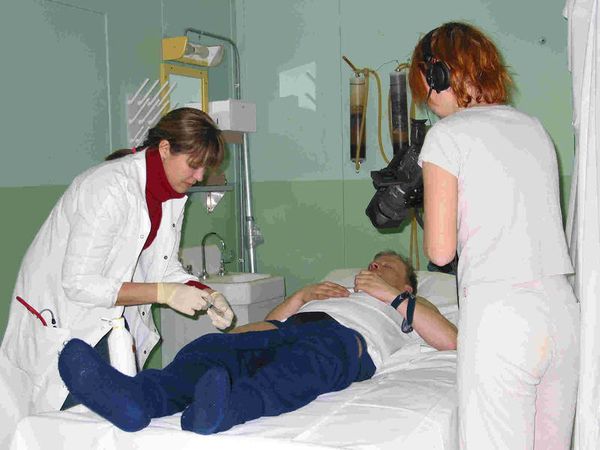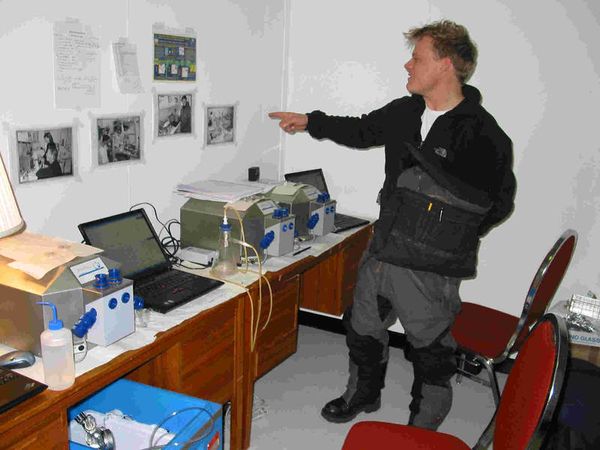Difference between revisions of "Greenland Expedition CMRC 2004"
| Line 43: | Line 43: | ||
File:Greenland7.jpg|Arrival of the Danish participants at Thule Air Base (Pituffik). Søren (left) is happy to be in Greenland, as he explains to Cindy Wright (centre). We have just returned from a trip with the helicopter to welcome the Inuit hunters arriving in the North Star Bay (Thule) after a 5-days dog sledge trip from Qaanaaq (Thule). | File:Greenland7.jpg|Arrival of the Danish participants at Thule Air Base (Pituffik). Søren (left) is happy to be in Greenland, as he explains to Cindy Wright (centre). We have just returned from a trip with the helicopter to welcome the Inuit hunters arriving in the North Star Bay (Thule) after a 5-days dog sledge trip from Qaanaaq (Thule). | ||
File:Greenland8.jpg|In the USAF Hospital Thule Air Base, Søren makes himself familiar with the equipment layed out for the participants at the 42-days expedition. | File:Greenland8.jpg|In the USAF Hospital Thule Air Base, Søren makes himself familiar with the equipment layed out for the participants at the 42-days expedition. | ||
File: | File:Greenland9.jpg|The first steps of Søren on skies with the 40-kg sledge do not yet appear to be professional. The Danish participants have to pull their sledge, while the Inuit hunters accompany the group with the dog sledges (in the back). (Thule Air Base, North Star Bay, March 2004) | ||
File:Greenland10.jpg|Skiing on the iscecovered Wolstenholme Fjord, Søren shows his acquired skills and endurance, close to the camp where they will put up their tents next to an iceberg. In the far background, an Inuit hunter with his sledge keeps guard - in case of the appearance of an icebear, his hunting gear is ready. | File:Greenland10.jpg|Skiing on the iscecovered Wolstenholme Fjord, Søren shows his acquired skills and endurance, close to the camp where they will put up their tents next to an iceberg. In the far background, an Inuit hunter with his sledge keeps guard - in case of the appearance of an icebear, his hunting gear is ready. | ||
File:Greenland11.jpg|After skiing and pulling his 40-kg sledge, after sleeping in the tent at temperatures between -35 °C and -45 °C, Søren is again ready for a leg biopsy, to be taken by Jaya Rosenmeier (left) and being observed by Danish television (right) (USAF Hospital, Thule Air Base, March 2004). | File:Greenland11.jpg|After skiing and pulling his 40-kg sledge, after sleeping in the tent at temperatures between -35 °C and -45 °C, Søren is again ready for a leg biopsy, to be taken by Jaya Rosenmeier (left) and being observed by Danish television (right) (USAF Hospital, Thule Air Base, March 2004). | ||
File:Greenland12.jpg|Søren is surprised to find his picture (from the CMRC lab in Copenhagen) on the wall of our lab at Thule Air Base, where high-resolution respirometry reveals changes of his muscle mitochondria. | File:Greenland12.jpg|Søren is surprised to find his picture (from the CMRC lab in Copenhagen) on the wall of our lab at Thule Air Base, where high-resolution respirometry reveals changes of his muscle mitochondria. | ||
</gallery> | </gallery> | ||
Revision as of 10:56, 20 May 2015
CMRC Greenland Expedition 2004
During March and April 2004, the Copenhagen Muscle Research Center accomplished a research expedition in the Northwest of Greenland. The overall aim of the project is to elucidate the connection between genes, environment and early appearance of chronic diseases, particularly diabetes 2. Another intention is to throw light on metabolic adaptations in relation to health effects. Part of the project was the evaluation of mitochondrial respiratory parameters measured by high-resolution respirometry in permeabilized muscle fibers. These were prepared from small biopsies of the arm and leg of traditional life-style Inuit hunters, Western life-style Inuits, and a group of 16 Danish participants of the 42-days expedition.
Three units of the OROBOROS O2k were part of the expedition - in the northernmost application of high-resolution respirometry (Thule Air Base; 76.4°N, 68.5°E).
- Overview - A flavour of the project
- Subject 10 - From pre-experiments in Copenhagen to the adventure of the Greenland Expedition
- Gnaiger] (Innsbruck AT) High-resolution respirometry in small biopsies of human muscle: Correlations with body mass index and age. MiP 2005. Pages 14-15.
- Boushel (Montreal CA) Local adaptations in mitochondrial substrate-specific O2 flux capacity with prolonged, low intensity, whole-body endurance training. MiP2005. Page 16.
Gallery
All slides by Erich Gnaiger
Overview
Subject 10
Arrival of the Danish participants at Thule Air Base (Pituffik). Søren (left) is happy to be in Greenland, as he explains to Cindy Wright (centre). We have just returned from a trip with the helicopter to welcome the Inuit hunters arriving in the North Star Bay (Thule) after a 5-days dog sledge trip from Qaanaaq (Thule).
Skiing on the iscecovered Wolstenholme Fjord, Søren shows his acquired skills and endurance, close to the camp where they will put up their tents next to an iceberg. In the far background, an Inuit hunter with his sledge keeps guard - in case of the appearance of an icebear, his hunting gear is ready.
